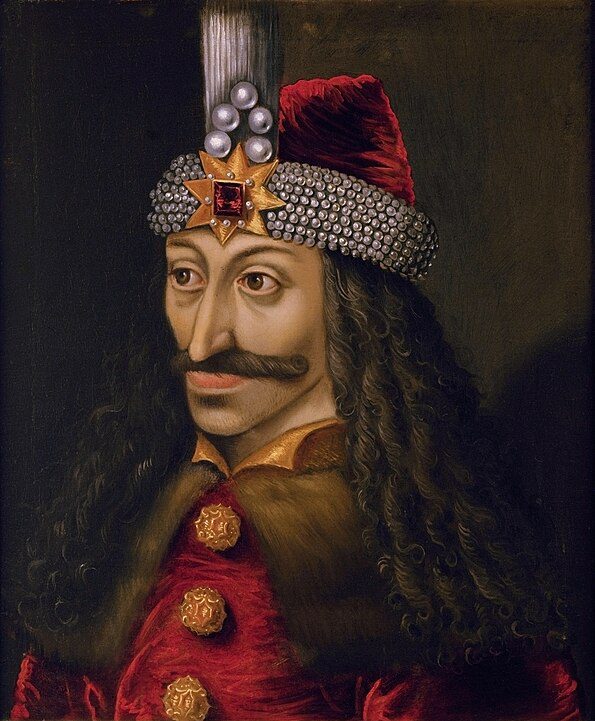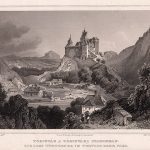
Vlad the Impaler, or Vlad III, has become a figure synonymous with fear, bloodshed, and dark power. His reign over Wallachia during the 15th century was soaked in blood, earning him a reputation that would inspire the infamous Count Dracula. His life was marked by a brutal defense against the Ottoman Empire and his merciless tactics in dealing with enemies. But what often goes overlooked is how his horrific legacy influenced art, particularly in its exploration of the macabre. From medieval depictions to modern interpretations, Vlad’s bloody tale has left an indelible mark on artistic expression.
The Historical Vlad: Setting the Scene for the Macabre
Before we discuss his artistic influence, it’s important to understand the man behind the legend. Born in 1431 in Transylvania, Vlad III ruled over Wallachia, a region that straddled the boundary between Christian Europe and the Muslim Ottoman Empire. His moniker, “the Impaler,” comes from his preferred method of execution—impalement, a method as grisly as it sounds.
Vlad’s brutality was aimed not only at external enemies but also at internal dissenters. In 1462, his reign reached a chilling peak when it was reported that he left 20,000 impaled Ottoman prisoners outside the city of Târgoviște. This horrifying sight sent shockwaves through Europe and gave birth to the sinister legend that surrounds him today. His life, filled with bloodshed, betrayal, and vengeance, naturally became fertile ground for artists interested in the dark and the grotesque.
Even in his own time, woodcut prints depicted Vlad as a monstrous figure. German pamphlets circulated images of Vlad dining among forests of impaled bodies, using these stark visuals to spread his terrifying image across Europe. These early depictions set the stage for the dark artistic portrayals that would follow in later centuries.
Gothic Art: The Seeds of Dracula’s Darkness
Gothic art and architecture have long been associated with themes of death and the supernatural, and Vlad the Impaler fit right into this aesthetic. In medieval times, artists drew heavily on religious imagery, often depicting the struggle between good and evil. Vlad, with his terrifying reputation, was frequently shown as a figure of pure evil, embodying the consequences of sin and corruption.
One of the most fascinating aspects of Vlad’s influence on Gothic art is how closely his image became intertwined with vampirism. The connection between Vlad the Impaler and Dracula, Bram Stoker’s famous vampire, wasn’t fully established until the 19th century, but the seeds were planted centuries earlier. Early Gothic illustrations of Vlad were filled with dark symbolism—blood, death, and suffering—often presented with religious overtones. In the church, the punishment of sinners was a common motif, and Vlad was the ultimate sinner, in a sense. His brutal methods of ruling paralleled the idea of divine punishment, a terrifying but necessary evil.
Paintings from this period often show grim, shadowy landscapes filled with death and suffering. Artists would lean into dark color palettes—reds, blacks, and grays—that signified blood, death, and decay. This would later become a staple of vampire lore, creating a seamless transition from Vlad the historical figure to Dracula the literary character.
Romanticism: The Rise of Dracula as a Symbol
Fast forward to the 19th century, and we see a major shift in the way Vlad the Impaler’s story was used in art. The Romantic period was marked by an obsession with the sublime and the grotesque, making it the perfect breeding ground for the myth of Dracula. During this era, artists were drawn to the emotional extremes of terror, awe, and fascination with death. The darker aspects of human nature were now seen as worthy subjects of art.
The real shift came when Bram Stoker’s Dracula was published in 1897. Although Stoker never explicitly stated that Vlad the Impaler was the inspiration for Count Dracula, scholars agree that the connection between the two figures is undeniable. Artists quickly seized on the fusion of history and legend, and Dracula became a central figure in the Gothic imagination.
The most famous visual interpretation of Dracula from this time period is likely the work of artists like John William Waterhouse, who illustrated Dracula in various editions. Waterhouse’s works often depicted the eerie, otherworldly beauty of the vampire’s world, with Dracula shown as a tragic, almost romantic figure. This was a significant departure from the monstrous depictions of Vlad seen in earlier centuries, but the core elements—blood, fear, and death—remained.
Symbolism: The Vampiric Undercurrents in Art
In the late 19th and early 20th centuries, Symbolist artists took the Dracula myth even further, embedding it with deeper philosophical meaning. Symbolism was a movement that sought to represent ideas and emotions through symbolic images, and the vampire, with its themes of immortality, bloodlust, and desire, was ripe for exploration.
One of the most prominent Symbolist artists to explore vampirism was Edvard Munch, the Norwegian painter best known for The Scream. His painting Vampire (1895) is a prime example of how the myth of Dracula influenced Symbolist art. The work shows a woman biting a man’s neck, a clear nod to the vampire myth, but it’s filled with emotional complexity. The figures seem both passionate and tragic, combining the fear of death with the longing for connection.
Munch’s Vampire is emblematic of how artists of the time used the figure of the vampire—and by extension, Vlad the Impaler—as a symbol of the darker side of human desire. It’s no coincidence that this period saw an increase in works that explored themes of death, sex, and power. Vlad’s legacy, through the lens of Dracula, became a vehicle for artists to grapple with these taboo subjects.
Modern Art: The Revival of the Macabre
Vlad the Impaler’s influence didn’t stop with Symbolism. In the 20th century, modern and contemporary artists continued to explore his legacy in new and unexpected ways. With the rise of surrealism, the grotesque and the uncanny became central themes in art, and Vlad’s bloody history once again became a powerful source of inspiration.
One of the most famous contemporary works inspired by Vlad is Anselm Kiefer’s Totenwald (Dead Forest) series. Kiefer, a German painter, is known for exploring themes of history, memory, and death in his work, and the Totenwald series, created in the 1980s, draws on the imagery of forests of the dead, reminiscent of the forests of impaled bodies associated with Vlad’s reign.
Kiefer’s work combines the horror of war with the mythic violence of figures like Vlad, creating a haunting landscape that invites viewers to contemplate the darker aspects of human history. The use of scorched earth, dark colors, and decayed materials gives the works a palpable sense of death and decay, drawing direct parallels to the medieval depictions of Vlad’s brutal tactics.
The Cinematic Vlad: From Painting to the Big Screen
In addition to its influence on fine art, Vlad the Impaler’s legacy has had a massive impact on cinema. The character of Dracula, inspired by Vlad’s bloody history, has been a fixture in horror films for over a century. But beyond the fictional Dracula, filmmakers have also explored Vlad the Impaler himself as a subject.
One of the earliest cinematic portrayals of Vlad is the 1979 Romanian film Vlad Țepeș, directed by Doru Năstase. The film depicts Vlad not as a monster but as a national hero defending his people from Ottoman invasion. This depiction reflects a more complex understanding of Vlad in his home country, where he is often seen as a patriot rather than a sadistic tyrant. However, the film’s visual style, filled with dark, ominous imagery, still draws on the macabre aesthetic associated with Vlad’s bloody legacy.
More recently, films like Dracula Untold (2014) have attempted to blend the historical Vlad with the fictional Dracula, creating a hybrid figure that embodies both the horror of the vampire myth and the brutality of Vlad’s real-life exploits. While these films may take liberties with history, their dark, dramatic visuals are heavily influenced by centuries of artistic depictions of Vlad as a figure of terror.
Contemporary Pop Culture: Vlad’s Ongoing Influence
Even today, Vlad the Impaler continues to inspire artists, writers, and filmmakers. His dark legacy has become a powerful symbol in contemporary pop culture, particularly in the realm of horror. From comic books to video games, Vlad’s image as the ultimate villain lives on.
One of the most notable recent uses of Vlad’s image is in the Castlevania video game series, which features Dracula as its central antagonist. The game’s dark, gothic aesthetic is heavily influenced by the same themes of blood, death, and fear that have surrounded Vlad for centuries. In these modern interpretations, Vlad’s legacy is reimagined for a new generation, but the core elements of his story—violence, power, and the supernatural—remain unchanged.
The Enduring Fascination with Vlad the Impaler
Why does Vlad the Impaler continue to fascinate us? Perhaps it’s because his story touches on something primal—our fear of death, our fascination with violence, and our struggle to understand the darker aspects of human nature. Artists throughout history have used Vlad’s bloody legacy as a way to explore these themes, and as long as we remain captivated by the macabre, Vlad’s influence will endure.
In a world that’s often sanitized and polished, the brutal reality of Vlad’s reign reminds us of the raw, untamed forces that lie beneath the surface of human civilization. Whether through the chilling realism of medieval woodcuts or the symbolic imagery of modern art, Vlad the Impaler’s bloody legacy continues to cast a long shadow over the world of art.
And with that, we can only wonder: How will the next generation of artists interpret the horrors and legends surrounding Vlad the Impaler? We’ll be watching, cautiously—just in case.




